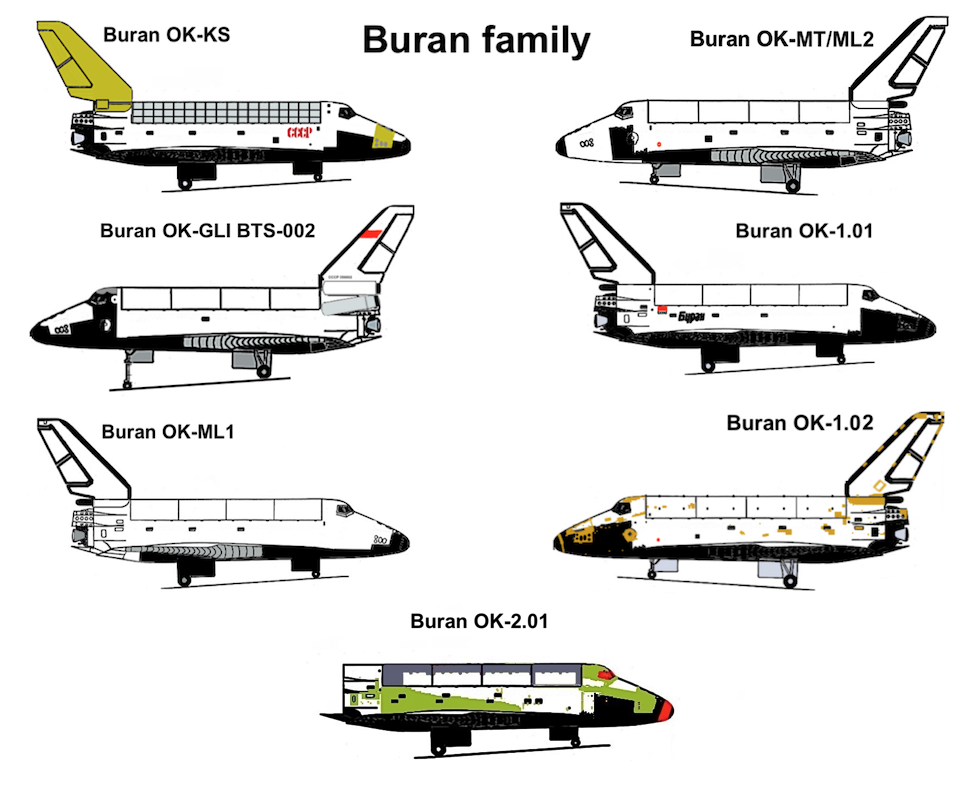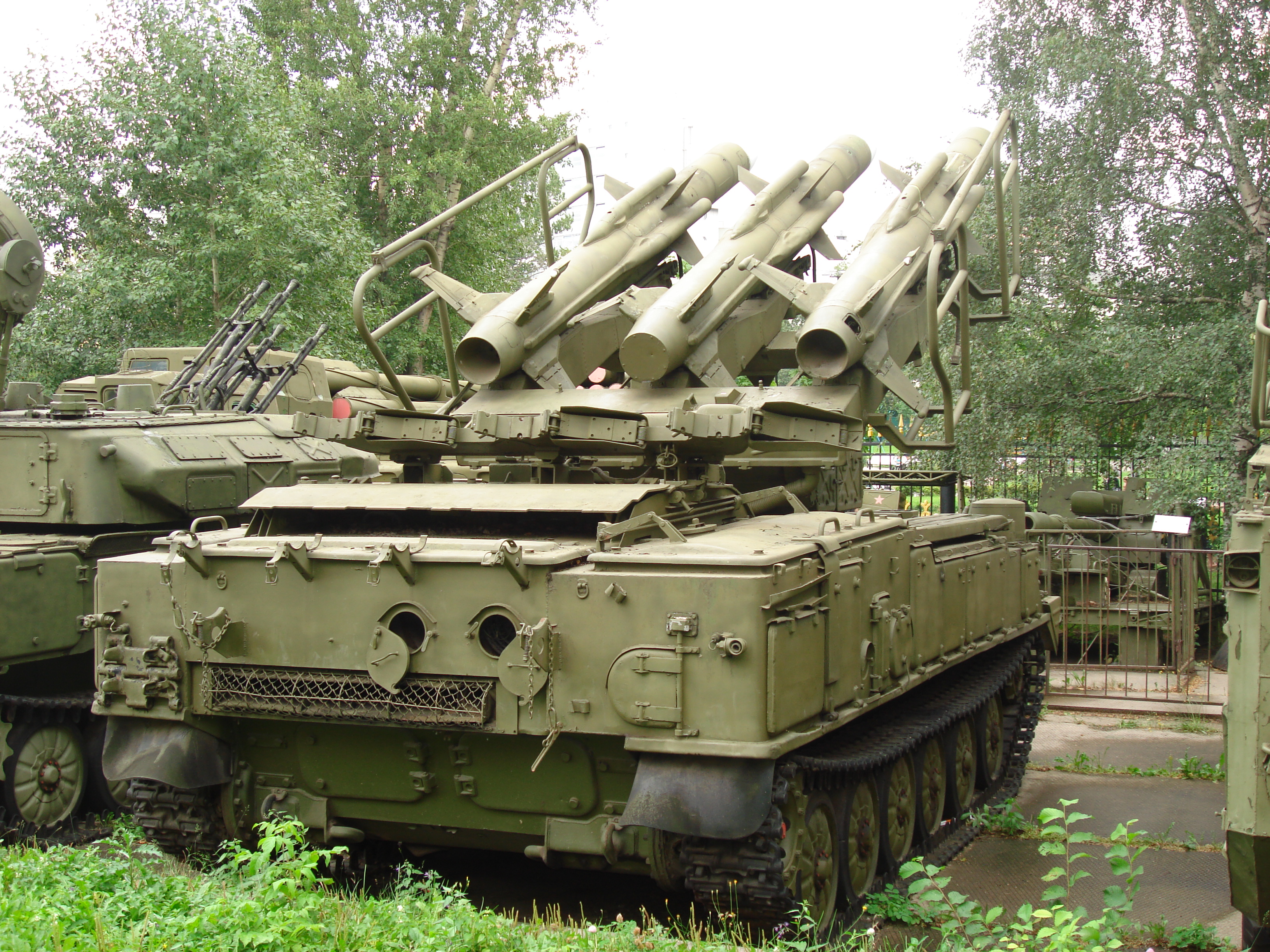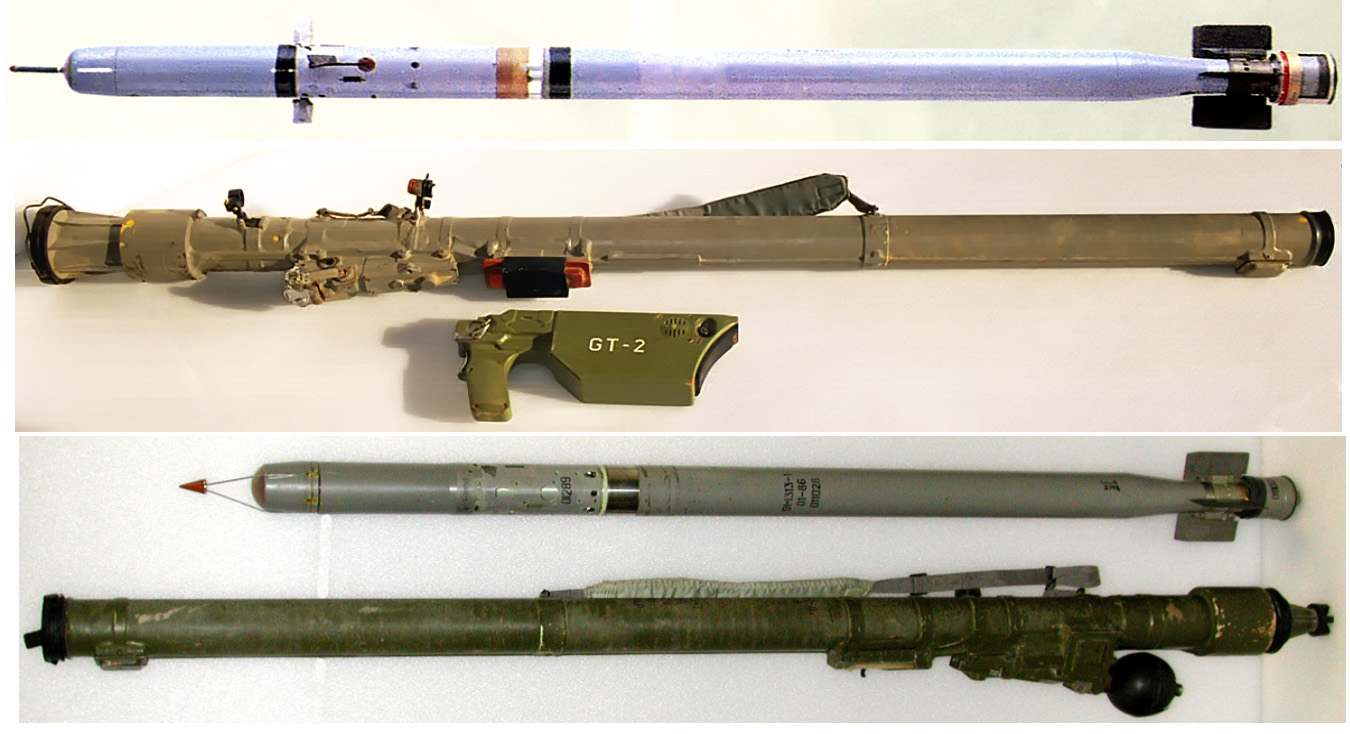|
Grau
The Main Missile and Artillery Directorate of the Ministry of Defense of the Russian Federation (), commonly referred to by its transliterated Russian acronym GRAU (), is a department of the Russian Ministry of Defense. It is subordinate to the Chief of Armament and Munition of the Russian Armed Forces, a vice-minister of defense. The organization dates back to 1862 when it was established under the name Главное артиллерийское управление (ГАУ – GAU). The "R" from "rockets" was added to the title in 1960. In particular, the GRAU is responsible for assigning GRAU indices to Russian army munitions and equipment. Arsenals of the GRAU, according to Kommersant-Vlast in 2005, include the 60th at Kaluga, the 55th at Rzhev, the 75th at Serpukhov south of Moscow, (all three in the Moscow Military District) and the 80th at Gagarskiy, the 116th at Krasno-Oktyabrskiy and the 5th, all in the Volga–Urals Military District.Kommersant-Vlast, Vys Rossik ... [...More Info...] [...Related Items...] OR: [Wikipedia] [Google] [Baidu] |
Ministry Of Defence (Russia)
The Ministry of Defence of the Russian Federation (russian: Министерство обороны Российской Федерации, Минобороны России, informally abbreviated as МО, МО РФ or Minoboron) is the governing body of the Russian Armed Forces. The President of Russia is the Commander-in-Chief of the Armed Forces of the Russian Federation and directs the activity of the Ministry. The Defence Minister exercises day-to-day administrative and operational authority over the armed forces. The General Staff executes the president's and the defence minister's instructions and orders. The main building of the ministry, built in the 1940s, is located on Arbatskaya Square, near Arbat Street. Other buildings of the ministry are located throughout the city of Moscow. The supreme body responsible for the Ministry's management and supervision of the Armed Forces is The National Defense Management Center (Национальный центр управ ... [...More Info...] [...Related Items...] OR: [Wikipedia] [Google] [Baidu] |
Buran (spacecraft)
''Buran'' (russian: Буран, , meaning "Snowstorm" or "Blizzard"; GRAU index serial number: 11F35 1K, construction number: 1.01) was the first spaceplane to be produced as part of the Soviet/Russian Buran program. Besides describing the first operational Soviet/Russian shuttle orbiter, "Buran" was also the designation for the entire Soviet/Russian spaceplane project and its orbiters, which were known as "Buran-class orbiters". Buran completed one uncrewed spaceflight in 1988, and was destroyed in the 2002 collapse of its storage hangar. The Buran-class orbiters used the expendable Energia rocket, a class of super heavy-lift launch vehicle. It is named after the Asian wind. Construction The construction of the Buran spacecraft began in 1980, and by 1984 the first full-scale orbiter was rolled out. Over 1000 companies all over the Soviet Union were involved in construction and development. The Buran spacecraft was made to be launched on the Soviet Union's super-heavy ... [...More Info...] [...Related Items...] OR: [Wikipedia] [Google] [Baidu] |
AK-12
The AK-12 is a Russian assault rifle chambered in 5.45×39mm designed and manufactured by the Kalashnikov Concern (formerly Izhmash), making it the fifth generation of Kalashnikov rifles. The Kalashnikov Concern also offers a variant of the AK-12 chambered in 7.62×39mm, known as the AK-15 due to the request of the Russian military. A variant chambered in 5.56×45mm NATO was later unveiled, known as the AK-19 upon the request of international clients. Compact variants of the AK-12 and AK-15 are also under development, respectively the AK-12K and AK-15K, which feature a shorter barrel. The AK-12 project began in 2011 by the IZHMASH factory, which became part of the Kalashnikov Concern as a private venture, in an attempt to participate in the " Ratnik" trials which were held by the Russian army. It was further developed by the Kalashnikov Concern, throughout its development and evaluation stage it has received multiple modifications to meet the Russian military's standard and to ... [...More Info...] [...Related Items...] OR: [Wikipedia] [Google] [Baidu] |
Rifle Scope
A telescopic sight, commonly called a scope informally, is an optical sighting device based on a refracting telescope. It is equipped with some form of a referencing pattern – known as a ''reticle'' – mounted in a focally appropriate position in its optical system to provide an accurate point of aim. Telescopic sights are used with all types of systems that require magnification in addition to reliable visual aiming, as opposed to non-magnifying iron sights, reflector (reflex) sights, holographic sights or laser sights, and are most commonly found on long-barrel firearms, particularly rifles, usually via a scope mount. The optical components may be combined with optoelectronics to add night vision or smart device features. History The first experiments directed to give shooters optical aiming aids go back to the early 17th century. For centuries, different optical aiming aids and primitive predecessors of telescopic sights were created that had practical ... [...More Info...] [...Related Items...] OR: [Wikipedia] [Google] [Baidu] |
MT-LBu
The MT-LBu is a Soviet multi-purpose fully amphibious armoured carrier which was developed under the factory index Ob'yekt 10 in the late 1960s, based on the MT-LB. It has a more powerful engine, a 40 cm higher hull and a longer chassis with 7 road wheels on each side. Development In the 1970s the Soviet Central Auto and Tractor Directorate embarked on a development program to replace the AT-P series of artillery tractors (that were based on the ASU-57) with a new generation of vehicles. The MT-L was developed to meet this requirement based on the PT-76 chassis. The MT-LB is the armoured variant of the vehicle. Entering production in the early 1970s, it was cheap to build, being based on many existing components including the engine which is actually a truck engine. The MT-LBu is a bigger, unarmed version that is used as the basis for many specialised vehicles. It was built at the Kharkov tractor plant in the USSR as well as Poland (Stalowa Wola) and Bulgaria (Beta JSCo.). ... [...More Info...] [...Related Items...] OR: [Wikipedia] [Google] [Baidu] |
BTR-60
The BTR-60 is the first vehicle in a series of Soviet eight-wheeled armoured personnel carriers (APCs). It was developed in the late 1950s as a replacement for the BTR-152 and was seen in public for the first time in 1961. BTR stands for ''Bronetransporter'' (БТР, Бронетранспортер, literally "armoured transporter"). History Origins The BTR-152 and BTR-40, the first two Soviet mass-produced APCs developed after the Second World War, gave the Soviet Army useful experience with wheeled armoured personnel carriers. However, even as they were designed, they were not suited for the needs of the Soviet Army as they lacked a roof (which was added in later versions designated BTR-152K and BTR-40B respectively). The low combat values of the BTR-152 and BTR-40 were exposed when the Egyptian Army used them during the Suez Crisis and also when the Soviet Army used them in the fighting on the streets of Budapest during the Hungarian Revolution of 1956. These were among the ... [...More Info...] [...Related Items...] OR: [Wikipedia] [Google] [Baidu] |
2K12 Kub
The 2K12 ''"Kub"'' (russian: 2К12 "Куб"; en, cube) (NATO reporting name: SA-6 "Gainful") mobile surface-to-air missile system is a Soviet low to medium-level air defence system designed to protect ground forces from air attack. "2К12" is the GRAU designation of the system. Each 2K12 battery consists of a number of similar tracked vehicles, one of which carries the 1S91 (SURN vehicle, NATO designation "Straight Flush") 25 kW G/ H band radar (with a range of ) equipped with a continuous wave illuminator, in addition to an optical sight. The battery usually also includes four triple-missile transporter erector launchers (TELs), and four trucks, each carrying three spare missiles and a crane. The TEL is based on a GM-578 chassis, while the 1S91 radar vehicle is based on a GM-568 chassis, all developed and produced by MMZ. Development The development of the 2K12 was started after 18 July 1958 at the request of the CPSU Central Committee. The system was set the require ... [...More Info...] [...Related Items...] OR: [Wikipedia] [Google] [Baidu] |
Vehicle
A vehicle (from la, vehiculum) is a machine that transports people or cargo. Vehicles include wagons, bicycles, motor vehicles (motorcycles, cars, trucks, buses, mobility scooters for disabled people), railed vehicles (trains, trams), watercraft (ships, boats, underwater vehicles), amphibious vehicles (screw-propelled vehicles, hovercraft), aircraft (airplanes, helicopters, aerostats) and spacecraft.Halsey, William D. (Editorial Director): ''MacMillan Contemporary Dictionary'', page 1106. MacMillan Publishing, 1979. Land vehicles are classified broadly by what is used to apply steering and drive forces against the ground: wheeled, tracked, railed or skied. ISO 3833-1977 is the standard, also internationally used in legislation, for road vehicles types, terms and definitions. History * The oldest boats found by archaeological excavation are logboats, with the oldest logboat found, the Pesse canoe found in a bog in the Netherlands, being carbon dated to 8040 ... [...More Info...] [...Related Items...] OR: [Wikipedia] [Google] [Baidu] |
Radar
Radar is a detection system that uses radio waves to determine the distance (''ranging''), angle, and radial velocity of objects relative to the site. It can be used to detect aircraft, ships, spacecraft, guided missiles, motor vehicles, weather formations, and terrain. A radar system consists of a transmitter producing electromagnetic waves in the radio or microwaves domain, a transmitting antenna, a receiving antenna (often the same antenna is used for transmitting and receiving) and a receiver and processor to determine properties of the objects. Radio waves (pulsed or continuous) from the transmitter reflect off the objects and return to the receiver, giving information about the objects' locations and speeds. Radar was developed secretly for military use by several countries in the period before and during World War II. A key development was the cavity magnetron in the United Kingdom, which allowed the creation of relatively small systems with sub-meter resolution. Th ... [...More Info...] [...Related Items...] OR: [Wikipedia] [Google] [Baidu] |
Radar
Radar is a detection system that uses radio waves to determine the distance (''ranging''), angle, and radial velocity of objects relative to the site. It can be used to detect aircraft, ships, spacecraft, guided missiles, motor vehicles, weather formations, and terrain. A radar system consists of a transmitter producing electromagnetic waves in the radio or microwaves domain, a transmitting antenna, a receiving antenna (often the same antenna is used for transmitting and receiving) and a receiver and processor to determine properties of the objects. Radio waves (pulsed or continuous) from the transmitter reflect off the objects and return to the receiver, giving information about the objects' locations and speeds. Radar was developed secretly for military use by several countries in the period before and during World War II. A key development was the cavity magnetron in the United Kingdom, which allowed the creation of relatively small systems with sub-meter resolution. Th ... [...More Info...] [...Related Items...] OR: [Wikipedia] [Google] [Baidu] |
Air Defense
Anti-aircraft warfare, counter-air or air defence forces is the battlespace response to aerial warfare, defined by NATO as "all measures designed to nullify or reduce the effectiveness of hostile air action".AAP-6 It includes surface based, subsurface ( submarine launched), and air-based weapon systems, associated sensor systems, command and control arrangements, and passive measures (e.g. barrage balloons). It may be used to protect naval, ground, and air forces in any location. However, for most countries, the main effort has tended to be homeland defence. NATO refers to airborne air defence as counter-air and naval air defence as anti-aircraft warfare. Missile defence is an extension of air defence, as are initiatives to adapt air defence to the task of intercepting any projectile in flight. In some countries, such as Britain and Germany during the Second World War, the Soviet Union, and modern NATO and the United States, ground-based air defence and air defence aircraf ... [...More Info...] [...Related Items...] OR: [Wikipedia] [Google] [Baidu] |
SA-16 Gimlet
The 9K38 Igla (russian: Игла́, "needle", NATO reporting name SA-18 Grouse) is a Russian/Soviet man-portable infrared homing surface-to-air missile (SAM) system. A simplified, earlier version is known as the 9K310 Igla-1 (NATO: SA-16 Gimlet), and the latest variant is the 9K338 Igla-S (SA-24 Grinch). The Igla-1 entered service in 1981, the Igla in 1983, and the Igla-S in 2004. The Igla has been supplemented by the 9K333 Verba since 2014.New Russian Verba MANPADS will replace Igla-S - Armyrecognition.com, 15 September 2014 History The development of the Igla short-range man-portable air defense system ( |









